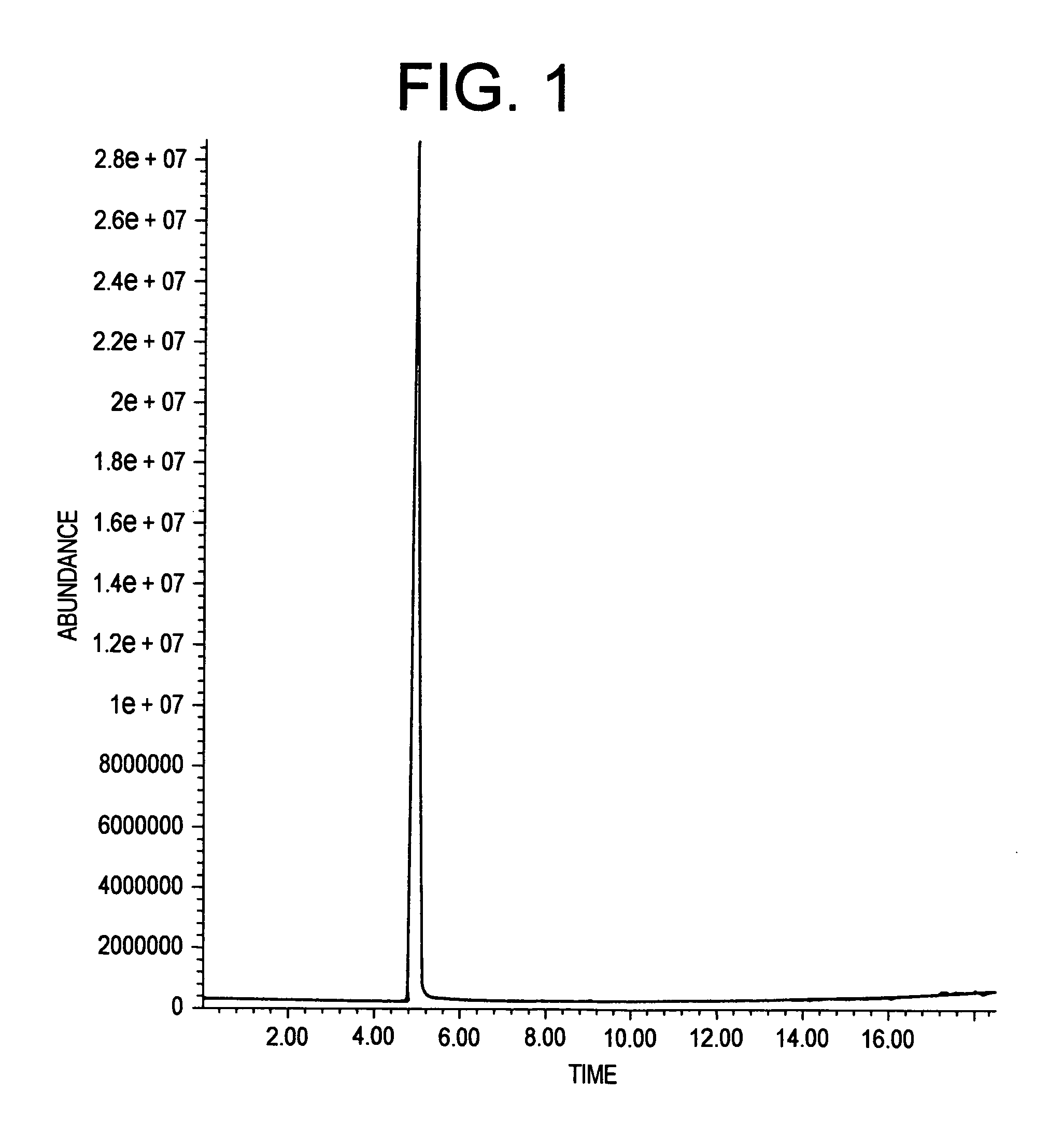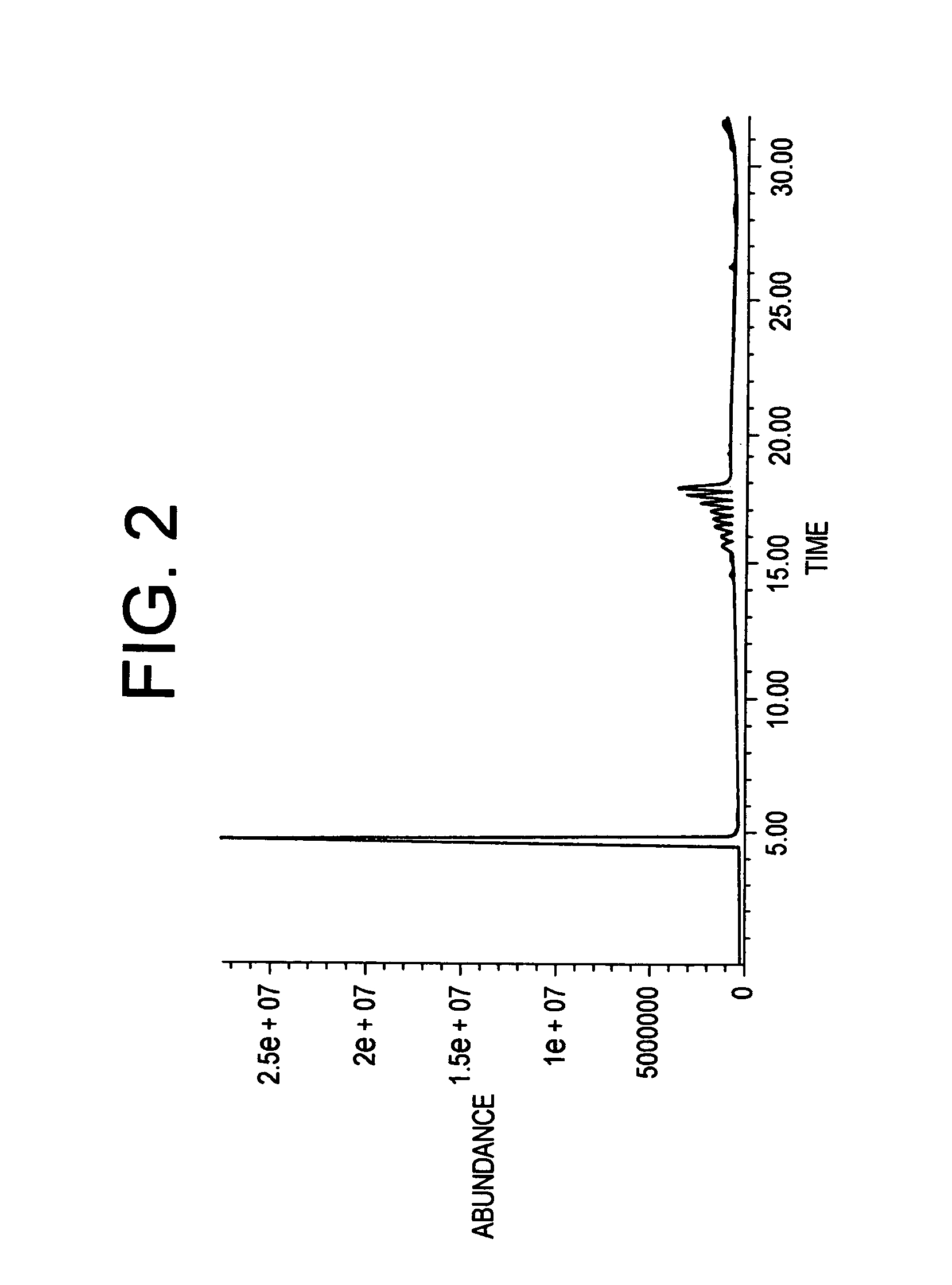Additives and methods for reducing odor
- Summary
- Abstract
- Description
- Claims
- Application Information
AI Technical Summary
Benefits of technology
Problems solved by technology
Method used
Image
Examples
example 1
[0051]Asphalt samples, labeled PG70-22 and 64-22, were heated until they became a viscous liquid. Approximately 5.0 g of each of the two asphalt samples were added to separate 20 mL vials. Vials were labeled 6422-1, 6422-2, 6422-3, 7022-1, 7022-2 and 7022-3. Vials were allowed to come to room temperature. One μL of odor reducing additive X was added to each of the 6422-2 and 7022-2 vials. One μL of odor reducing additive Y was added to each of the 6422-3 and 7022-3 vials. Individual vials, crimped shut using Teflon faced septa and aluminum seals, were placed in a Fisher forced air oven and heated at 151° C. for 30 minutes after which 1 mL of headspace of each vial was injected into a GC / MS system. A blank consisting of an empty crimped vial was also analyzed using identical procedures.
[0052]A large peak was found at a retention time of 4.7 minutes (FIG. 1). This substance, also found in the blank, was found to be a volatile substance given off by septa when heated to 151° C. and the...
PUM
| Property | Measurement | Unit |
|---|---|---|
| Fraction | aaaaa | aaaaa |
| Fraction | aaaaa | aaaaa |
| Fraction | aaaaa | aaaaa |
Abstract
Description
Claims
Application Information
 Login to View More
Login to View More - R&D Engineer
- R&D Manager
- IP Professional
- Industry Leading Data Capabilities
- Powerful AI technology
- Patent DNA Extraction
Browse by: Latest US Patents, China's latest patents, Technical Efficacy Thesaurus, Application Domain, Technology Topic, Popular Technical Reports.
© 2024 PatSnap. All rights reserved.Legal|Privacy policy|Modern Slavery Act Transparency Statement|Sitemap|About US| Contact US: help@patsnap.com










